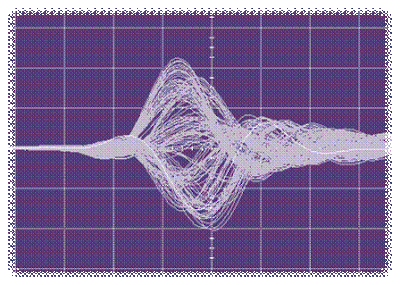Key events in the domain of Command, Control, Computer, Communications and Intelligence for Homeland Defense and Homeland Security applications. Technology reviews, product insights, contract awards, news reports, and press releases.
January 31, 2012
Contract Award: Rockwell Collins to research on advanced Software Radio Technologies
News Report
As announced in a recent press release, Rockwell Collins has launched work on Phase 2 of a Defense Advanced Research Projects Agency (DARPA) research contract valued at $5.3 million. The effort is expected to increase the capability of digital software defined radios by a factor of ten over existing technology.
The Remote Analog to Digital Converter with Deserialization and Reconstruction (RADER) program calls for Rockwell Collins to develop power-efficient high-speed photonic analog to digital (A/D) converters with capability for remote operation. Research is currently underway and will conclude at the end of 2012 under the terms of the agreement.
The Technology
Signal processing of an arbitrary analog signal is today performed in the digital domain which relies on Analog-to-Digital Conversion (ADC). The objective of the RADER program is to revolutionize ADC by developing a photonic front-end that bridges the high bandwidth and scalability of photonic processing and the high performance of low-speed commercial ADCs.
Performance of conventional electronic-based ADCs is mostly limited by the finite transition speed of semiconductor circuits. To circumvent the rate barrier, photonic technology has been employed as photonic-based ADC or photonic-sampled ADC in order to improve performance compared to conventional electronic-based ADCs.
Within the RADER program, Rockwell Collins researchers are trying to exploit the photonic technology to enable ADC to operate in continuous time over a 10 GHz input instantaneous bandwidth with a resolution of 10 effective number of bits, all within a dense input signal environment while limiting the amount of DC power consumption to less than 50 Watts.
Rockwell Collins experts also are trying to sense analog waveforms at a point remoted from the components or subsystems that require significant portions of the power budget.
The Context
Critical to all military missions and the ability to gain tactical advantage is the accurate collection and assessment of information contained in the electromagnetic (EM) environment. Present day radio frequency (RF) sensor systems must simultaneously cover many RF and microwave bands and must deliver accurately processed information on an always-decreasing time scale, in an ever more cluttered EM environment. Conventional ADC technology, however, limits the maximum resolvable information bandwidth and the minimum obtainable frequency resolution that can be achieved on each of the multiple input signals. Despite a significant military need, progress in advancing the state-of-art in very high resolution, high sampling rate ADC systems has been slow. This progress has been limited in large part by ADC circuit design and available underlying transistor technology, resulting in a key limitation on the achievable dynamic range, bandwidth coverage, reaction time and versatility of military systems.
Scanning superheterodyne or channelized RF systems partly compensates for present shortcomings in ADC resolution and bandwidth. However, these systems have large size, weight and power requirements, and have static and instantaneous frequency blindness leading to unacceptable probabilities of detection and/or mission failure.
The RADER program seeks to overcome conventional ADC limitations by employing advanced front-end techniques in conjunction with multiple, more conventional ADCs. RADER leverages novel front-end architectures to incorporate de-serialization and reconstruction functionality to reduce the information-processing burden placed on individual ADCs, effectively multiplying the performance of the ADC to overcome the current performance limitations. RADER techniques are expected to be scalable and future-proof with regards to advancements in base ADC technologies.
This is the second RADER contract awarded to Rockwell Collins. In Phase 1, Rockwell Collins was the only company, out of three selected, to successfully demonstrate an A/D Converter with a minimum of 8 Effective Number of Bits (ENOB) operating at 10GHz, an industry first. While the aim of Phase 2 is to significantly increase electronic countermeasure capabilities, the research could ultimately be applied across a broad spectrum of military and commercial communication devices.
Comments
“In this stage of the RADER program, we’ll be working to shrink the A/D technology that we developed in Phase 1 onto a single silicon device,” explained John Borghese, vice president, Advanced Technology Center for Rockwell Collins. “The miniaturization of the technology we’ve already proven will enable integration into next generation radio devices.”
References: Rockwell Collins (1), Photonic Systems Group (2), Military&Aerospace (3), DARPA (4)
Subscribe to:
Post Comments (Atom)

No comments:
Post a Comment